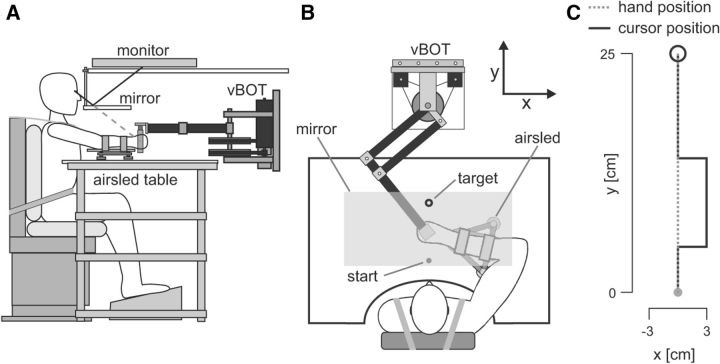Figure 1.
Experimental paradigm. A, Subjects were seated with their right forearm resting on an air sled. They grasped the handle of a robotic manipulandum (vBOT) with their right hand. Direct view of their right arm was prevented by a mirror through which visual feedback from the monitor was overlaid in the plane of movement. B, The subjects' task was to make forward-reaching movements from a start point (filled gray circle) located ∼20 cm in front of the chest to a target (black circle) placed directly across the start point (i.e., on the y-axis). C, Throughout the study, a visual cursor was presented to the subject as a representation of their hand location. On probe trials, the cursor could jump either right or left by 3 cm (i.e., perpendicular to the principal axis of movement) for 250 ms (black trace). During these trials, the physical location of the hand (gray dotted trace) was constrained to move in a straight line toward the target by a mechanical channel produced by the vBOT. These trials were used to measure the magnitude of the visuomotor feedback response (which we term “gain”).

